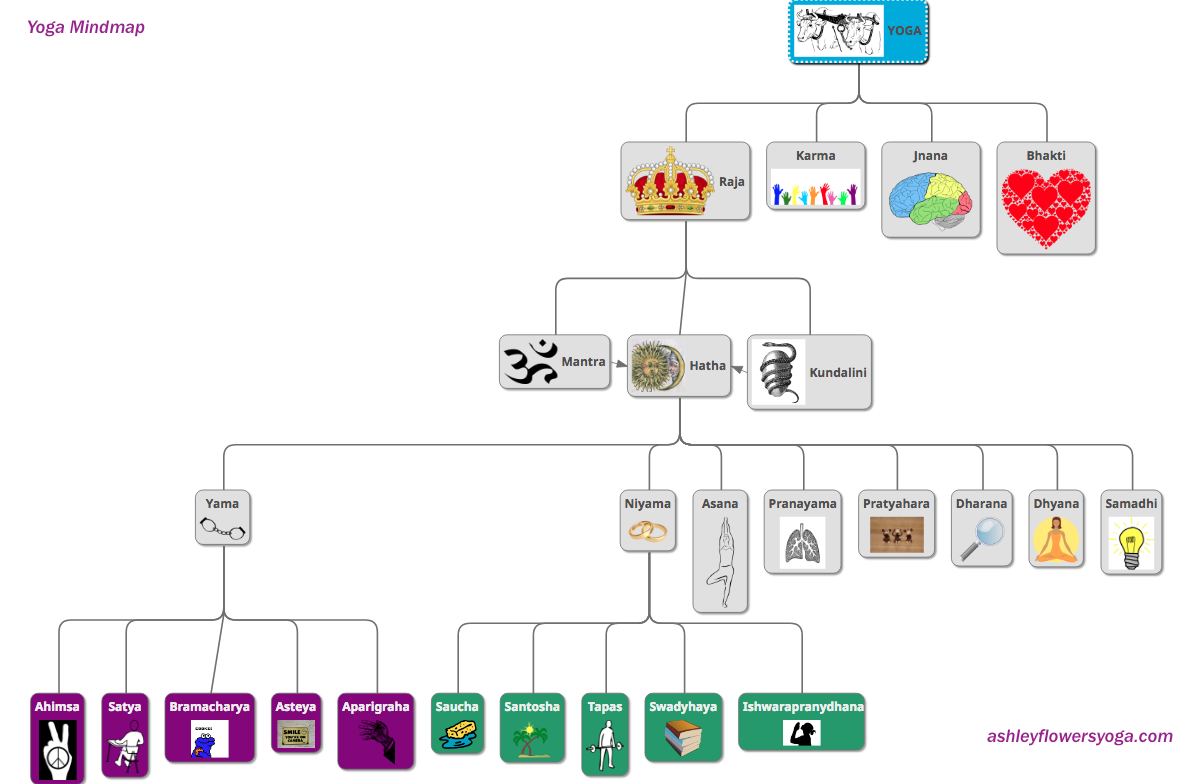Many of us who “do” yoga have come in through the physical practice of Asana, or postures. There is so much more to yoga than just postures though. Here is a little mind map to give you a bit of an overview.
 Perhaps you have heard of yoga referred to as the 8-limbed path before or perhaps not. Without getting into all 8 limbs too deeply at this moment, I want to share with you just a little about the first two limbs of Yoga.
Perhaps you have heard of yoga referred to as the 8-limbed path before or perhaps not. Without getting into all 8 limbs too deeply at this moment, I want to share with you just a little about the first two limbs of Yoga.
Before I do though, let me take a step back. I am currently taking a Yoga Philosophy course with the Shiva Shakti School and I am loving it. In learning about the historical context of how yoga would have been practiced in the East, I really connected with the idea that as a spiritual aspirant in the East you start as a young person with the first limb of Yoga and you work your way through. Thereby, allowing you to apply the principles of each limb of the practice to all the subsequent limbs.
YAMAS
Now, as I was saying, the first limb of the Yoga pracitce is the Yamas, or the ethical restraints.
- Ahimsa – Non-Violence
- Brahmacharya – Non-Indulgence of the Senses
- Asteya – Non-Stealing
- Satya – Non-Lying
- Aparigraha – Non-Grasping/Hoarding
At a gross level it is easy to understand why we wouldn’t want to engage in the activities listed below. On a more subtle though, take a moment to think about whether you are applying those concepts to your physical practice of you though…hmm. Have you ever hurt yourself in a yoga class, because you weren’t honest with yourself about what you could do? Have you ever felt less than great about yourself after being in a yoga class and coveting the cool new outfit/mat/physique the person next to you had? Does these things ultimately bring us closer to happiness? NO, so let them go, practice the first limb of Yoga and restrain yourself from those things that are not beneficial to yourself or others.
NIYAMAS
The second limb of yoga is the Niyamas, the ethical commitments.
- Saucha – Cleanliness
- Santosha – Contentment
- Tapas – Effort or sacrifice
- Svadhyaya – Study of self and text
- Ishvarapranidhana – Devotion to something greater than yourself
Again, on the surface these concepts may seem easy. Just for fun lets run through them.
1. Cleanliness is good. Obviously, got it!
2. Contentment, yes. Don’t worry, be happy!
3. Putting forth the effort and sometimes sacrificing our own wants and needs for the greater good, of course!
4. Study of one’s self or reading educational materials and reflecting deeply on their meaning in your life, sounds great.
5. Devotion to something bigger, try not to get hung up on this one. How about a recognition of the incredible beauty of a flower, the majesty of the mountains, the recognition that we are just one single spark of life in a world filled with life, creativity, and energy. Can you get behind that?
When you look a little deeper though, turning those concept inward, do you have pure clean thoughts about your body or your practice, or do you have unkind self thoughts? Are you content with your ability? Do you truly seek to know and understand your body, or do you just do what the teacher tells you. Curious indeed!
Turn Inward
Next time you do yoga, see if you can turn the focus in. Apply the restraints and the commitments to your practice. And remember, it’s a practice! Why do we practice, so we can improve!
In my personal reflection, I find that there are 3 shining areas that need deeper work and reflection. Non-violence (towards self), contentment with what is, and putting in the effort when things are hard. I recognize where I can do better, but I also forgive myself for the times when I have not met the mark.
Where could you do a little better in your own personal restraints and commitments?




